Whether you’re looking to lose body fat, increase your strength, pack on some muscle, or simply train for health, varying the tempo of your workouts will pay big dividends. In this week’s post we are going to look at a simple way that we build varied tempos in to every one of our members’ programs.
It starts with a plan
Based on each member’s assessment, we produce an individualized plan to help take them from where they currently are (point A), to where they want to be (point Z).

The plan is broken into blocks of training (4-6 months each), then further broken into phases (4-6 weeks each), which consist of individual training weeks, and the training days themselves.
Today we are going to focus on those individual training weeks, and how we vary the volume (total amount of work done) and intensity (percentage of max strength) across each phase. Think of the volume-intensity relationship this way… If you’re doing 3 sets of 20 reps of back squats, that’s high volume (amount of work done). As a result, the intensity (% of your one rep max used) would have to be pretty low.
Got it?
Good.
To keep things even simpler, we don’t use percentage of one rep max with our members of Beyond Strength Performance NOVA. Rather, we use a rating of perceived exertion (RPE). RPE is a numeric scale, numbering 1-10, used to classify perception of intensity. 1 would be described as no effort needed at all to complete the given set of a lift, whereas a 10 would be all out effort, leaving absolutely nothing left in the tank.
[To keep things simple we are going to use someone that trains three times per week as an example.]
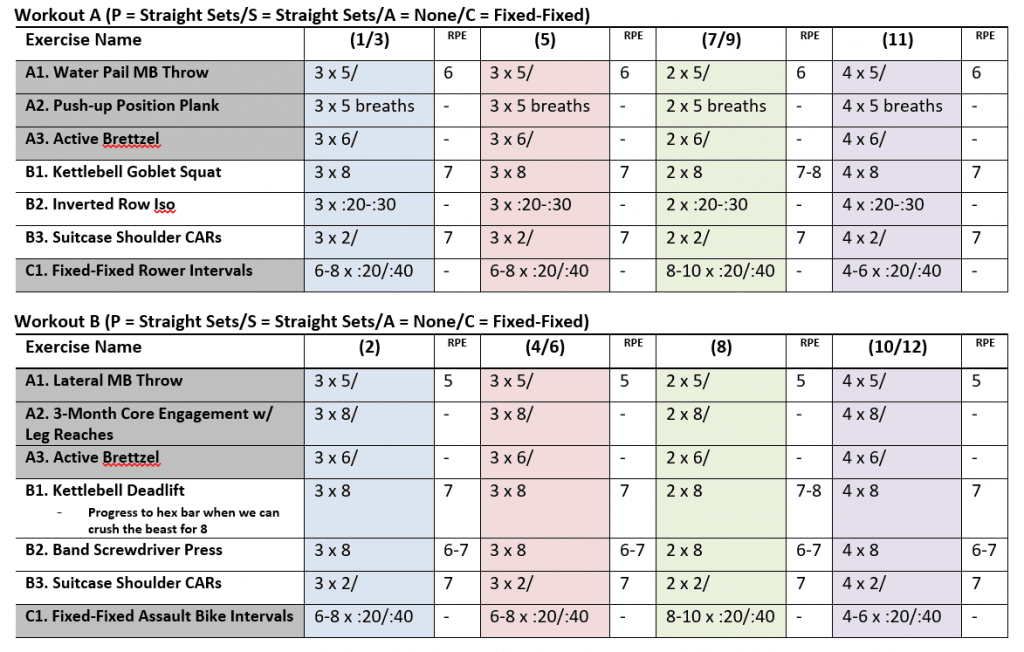
Here’s how easily we apply the RPE to a set of squats:
Coach: Hey Jennifer, that set of goblet squats looked great- what number would you say that felt like on the RPE scale?
Jennifer: Thanks, coach! Not heavy, really, I’d probably call it a 6.
Coach: Wow, great! If you look at your program, this week calls for an RPE of 7, so let’s grab a heavier bell for this next set.
Week 1 (Sessions 1-3): Base
In week one, or the blue column of the example above, our goal is to gain familiarity with the new exercise(s) in the phase. We’ll spend a little more time explaining the movements, and finding the appropriate weights to meet our RPE. This might mean that we actually only get to our goal RPE on some of our sets, and that’s totally fine! Why would that be? We’ll use a set or two to dial in form, and then get after it and find our appropriate RPE with the remaining sets, which is the real goal of week one.
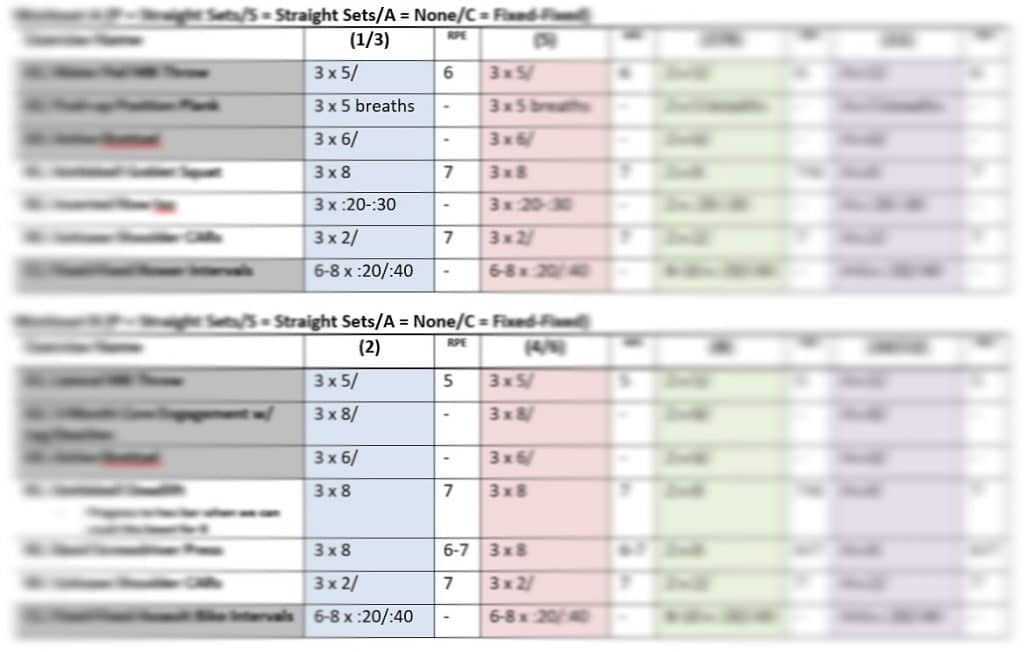
[Quick aside: If someone is totally new to training, their week one may actually have less total sets, allowing even more time for learning completely new movements…]
Total training time of each session in week one: about one hour, including warm-up and cool-down.
Week 2 (Sessions 4-6): Train
Since we laid the groundwork of learning the movements and determining weights that met our RPE in week one, week 2 is all about getting after those weights, for all of our sets. Hopefully you recorded your weights in week one, like you were supposed to, because you’ll be referencing those in week two.
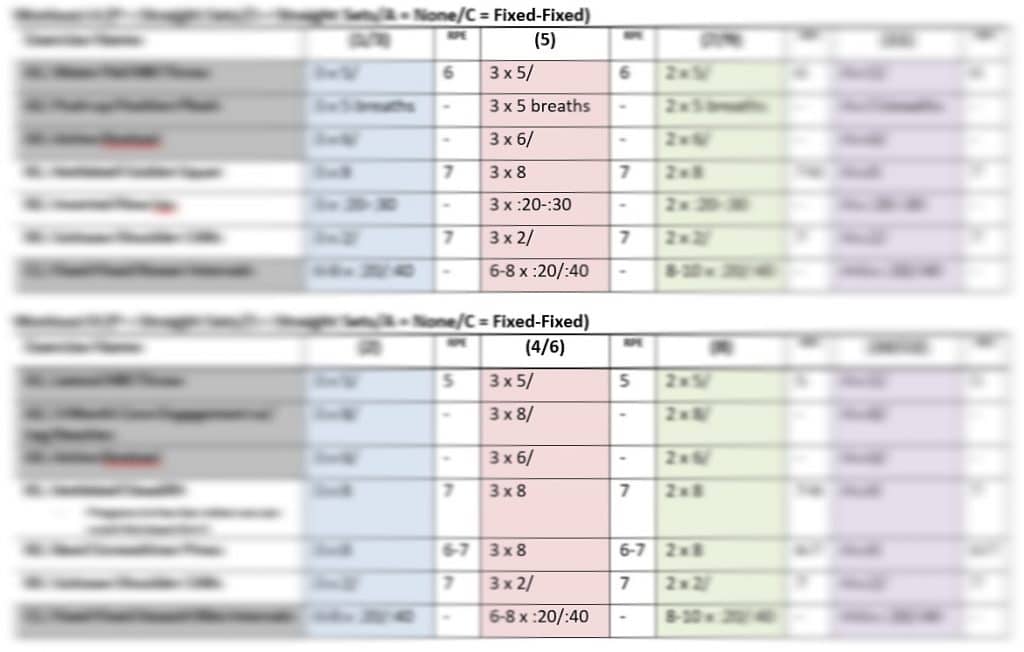
So we crush a solid warm-up and we get to work using last week’s numbers. And here’s the cool thing… a familiarity with the movements from a solid week one of training may have actually set us up to use heavier weights at the same RPE in week 2!
Coach: Woah, Jennifer, that set looked pretty easy, what say ye? [coach is weird…]
Jennifer: Yeah, I’d say last week’s 7 feels like a 5 right now!
Coach: Well I’ll be darned, let’s add some more iron next set!
Jennifer: Right on, dude!
Total training time of each session in week two: about one hour, including warm-up and cool-down.
Week 3 (Sessions 7-9): PR and Go Home
With two weeks of training these movements under our belt, and pushing the same RPE in weeks one and two, we’re going to rock the boat a little bit in week three. If we had to put a name to the pace of weeks one and two, we’d call them moderately paced. In week three, you’ll notice that our volume, or number of sets in this case, is cut down, but our intensity, or RPE, has gone up.
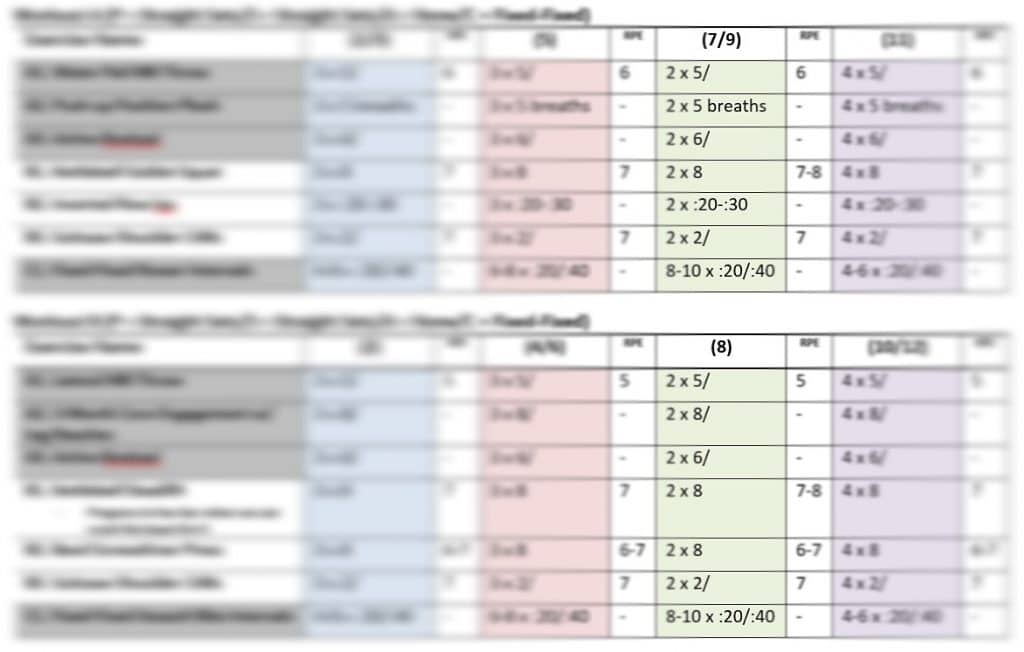
This is the week that many of our members like to call their “short week,” but that’s not accurate if done correctly. If we truly follow our increased RPE, we should be trying to hit program personal records (PR’s) here. In order to do this, we’re going to need longer bouts of rest between sets. In other words, we take week three at a slower pace. Although our total volume has gone down quite a bit, that increased rest, due to the rise in intensity, will probably keep us in the gym around- you guessed it- an hour.
Put simply, hit some personal records and rest up for the next one.
Total training time of each session in week three: about one hour, including warm-up and cool-down.
Week 4 (Sessions 10-12): Reach
Jennifer: I’m on my long week.
Coach:
No you’re not!!!!
Any of our members reading this probably just laughed out loud at that one. But really, this is the most common misconception of those in the know with BSP NOVA’s programs.
It’s not your long week, it’s your high volume week.
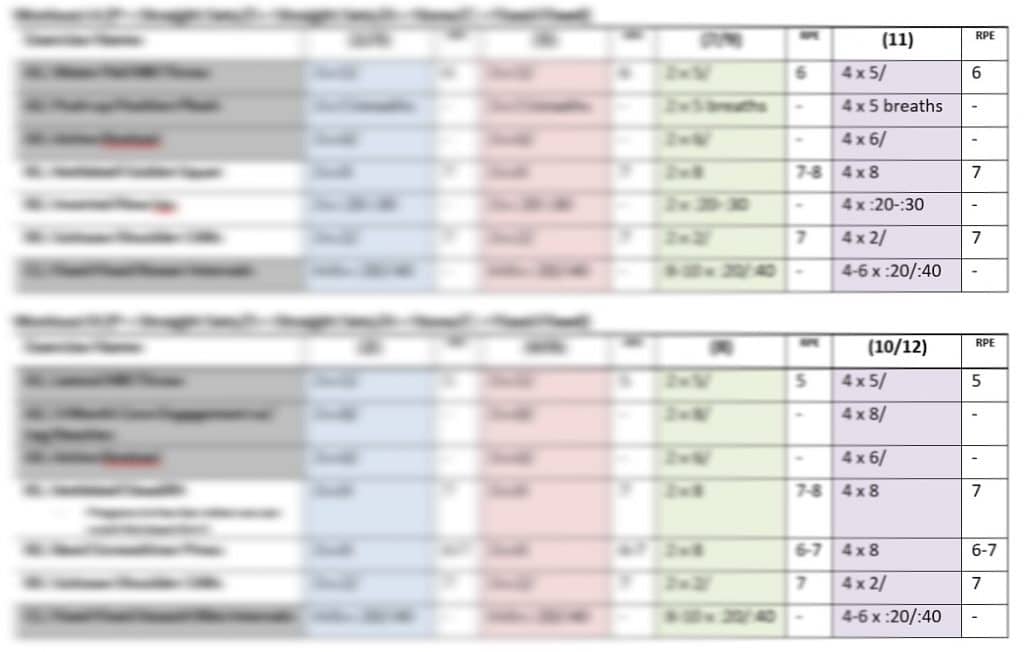
Week four brings a big rise in volume from week three- usually double. So, many of our members look at this and assume it’s going to take a lot longer to get through. And if they move at the same tempo as previous weeks, it will.
Here’s the goal…
Try and get as close as possible to the weights you used in week three, without exceeding the week four RPE. In other words, you’ve gotten stronger, or at least your perception of what you’re capable of has gone up, and we’re going to take advantage of that in week four.
On top of that, we are going to move at a moderately fast tempo.
All of this while still working on mastery of movements throughout. What we mean is that we don’t let form break down to meet these challenges. THIS is the key to success…

Please, don’t you ever call it your long week again…

In Summary
Week 1: Learn the movements. Set a base.
Week 2: Train on that base.
Week 3: Take a little longer rest. PR and go home.
Week 4: Complete a large amount of work in the same amount of time as prior weeks.
Rinse.
Repeat.

